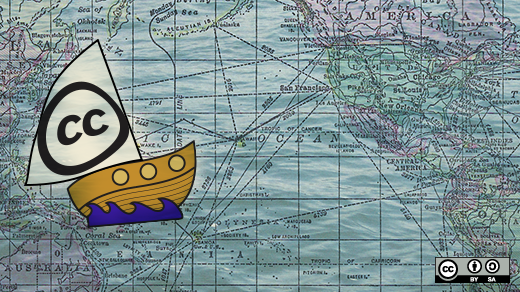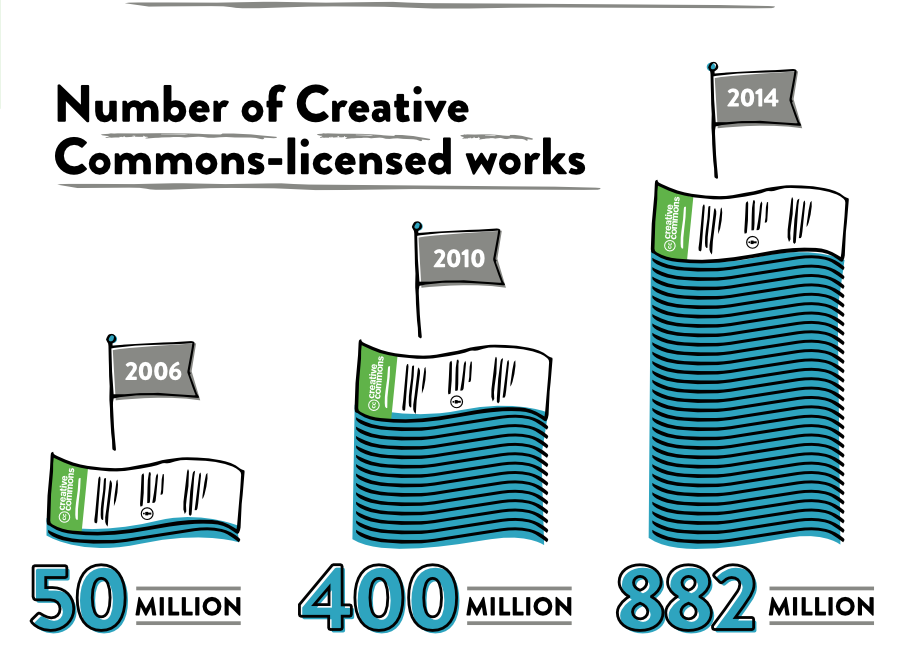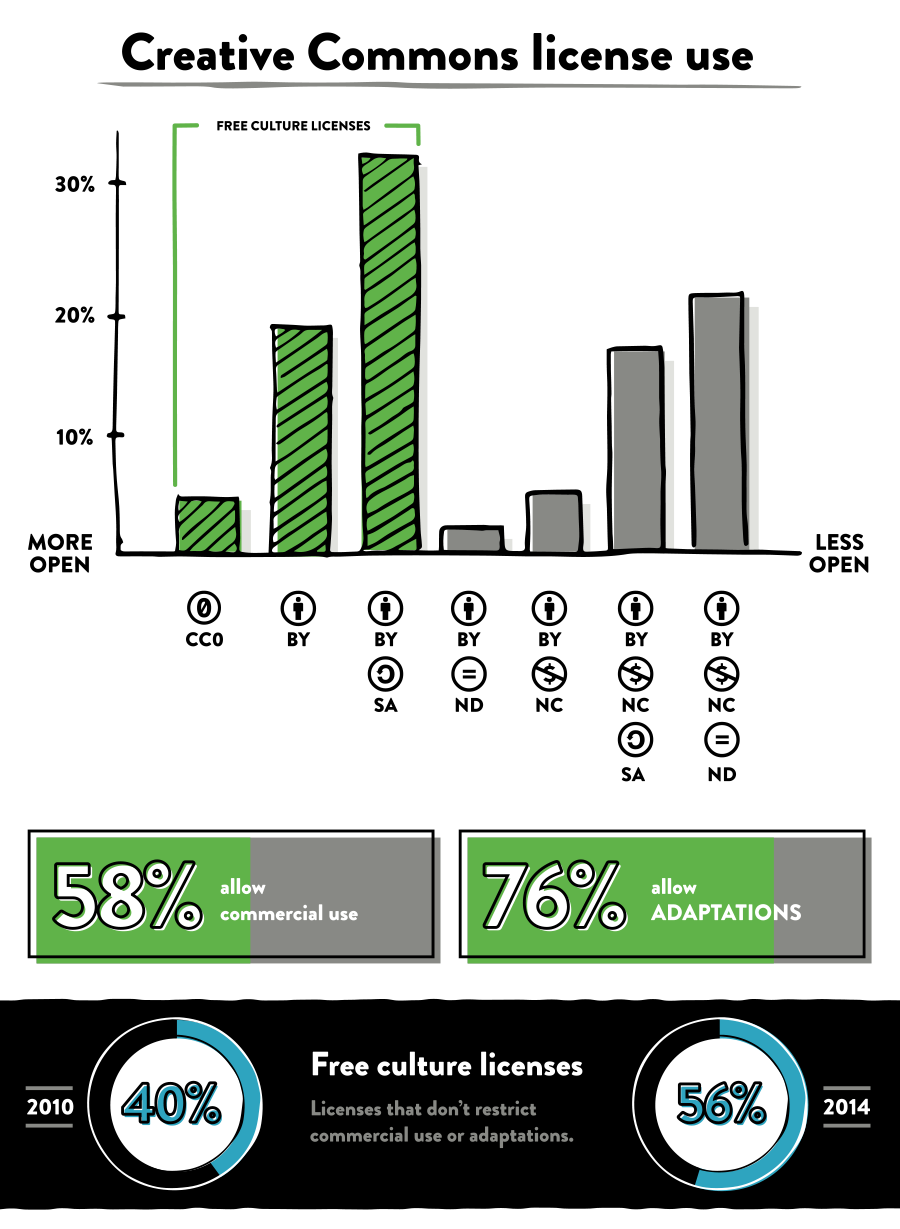Billion of Creative Commons licensed works
 Millions of content authors around the world use Creative Commons licenses to share their work with others.
Millions of content authors around the world use Creative Commons licenses to share their work with others.But counting the number of these works is not an easy task. There is not a single form that needs to be filled out for a license, nor a centralized repository, or at least a directory. It is impossible to say exactly how many people use CC.
Therefore, the evaluation of the news site Opensource.com is only an estimate. According to their research , in 2015, the total number of works will exceed one billion. The report also contains the methods used.
The Google cache has identified websites that link to a license description on the Creative Commons site. These data were used to estimate the amount of work. There are sites that contain a link to CC documents for some other reason, but they are so few that they are not taken into account.
')
 Some pages do not appear on Google for a variety of reasons. They were counted separately.
Some pages do not appear on Google for a variety of reasons. They were counted separately.Most of the works under Creative Commons licenses are stored on the following sites: Flickr (307 million), Wikipedia (111 million works on all pages in all languages), Scribd (50 million), MusicBrainz (39 million), Freebase (39 million) , deviantART (15 million), Geonames (10 million) and YouTube (10 million).
Were tracked data on the use of specific licenses. Every day, just from the servers of Creative Commons image-logos are sent 27 million times. This is only a part: many sites do not point directly to pictures, but store them on their servers.
Even if there is access to broad information about how, by whom and where licenses are used, it would be too difficult to demarcate the concept of work. In many cases it is unclear where each of the pieces begins and ends.
 Therefore, the results obtained are as accurate as possible in the study. All numbers received are the lower bound.
Therefore, the results obtained are as accurate as possible in the study. All numbers received are the lower bound.So, today on the Internet there are 882 million works distributed under the license of Creative Commons. Of these, as many as 56% allow both recycling and commercial use.
This is called a free culture license. In 2010, only 40% of the works were distributed under a free culture license. Probably, the increase in the share due to the fact that users better understand how useful and important free works.
In addition to numbers, the distribution by license is given:
- CC0 (public domain transfer): 4%.
- SS BY (free use, distribution, modification and commercial use with attribution): 19%.
- CC BY-SA (same, but under the same distribution conditions): 33%.
- CC BY-ND (free use, distribution, and commercial use unchanged): 2%.
- CC BY-NC (non-commercial use only, free distribution and change): 4%.
- CC BY-NC-SA (same, but derivative works must be licensed under the same conditions): 16%.
- CC BY-NC-ND (the same, but without derivatives): 22%.
The authors of 76% of the works allow the change and adaptation, and 58% allow commercial use.

Creative Commons licenses are used worldwide. Country data was collected from the license type selection page . It is available in 34 languages, and the geography of its visitors is much more diverse than on other pages of the site, which are often available only in English.
Of course, the data have an advantage in English-speaking countries, since Creative Commons is more popular among Anglophones. According to the results of geographical measurements, 2.03% falls on Russia and 0.6% on Ukraine.
Source: https://habr.com/ru/post/363809/
All Articles